Although people most often associate scuba diving and the ocean, there are plenty of amazing freshwater dives as well. There are roughly 42,320 square miles of lakes in the world — a tiny drop when compared to the ocean — but still a massive volume of water. Here are our picks for the world’s best lake dives, in no particular order, to get you started on your freshwater diving adventure.
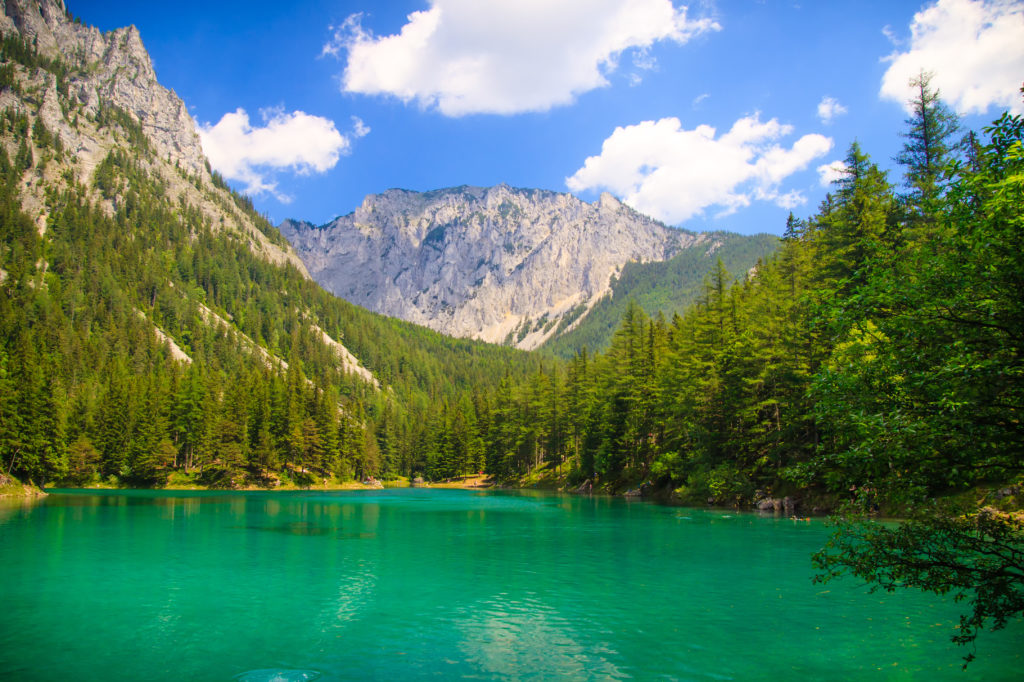
Weissensee, Austria
Landlocked Austria features many lakes — you may be familiar with the crystal-clear water of the Grüner See (Green Lake, which unfortunately is no longer open to divers. Fear not, as the Weissensee (White Lake) also has amazing vis. The lake is around seven miles (11 km) long and 318 feet deep (97 m) at the deepest point. The water quality is purportedly nearly good enough to drink right out of the lake. During the summer, the surface temps can reach 75 F (24 C). The lake is also famous for its ice diving, so it’s well worth a visit in the winter months.
Dolomitovy Pit, Russia
It may be off-the-beaten-scuba track, but Russia offers adventure aplenty. though the country’s vast size means travel planning is often quite complicated. We’ve chosen this former quarry lake, as it’s relatively easy to get to at only 14 miles (22 km) from Moscow. Created to mine dolomite, as well as minerals, the quarry is now home to trout, carp, pike and catfish that can reach up to eight feet (2.5 m) long. It’s no deeper than 46 feet (14 m), but the vis can be up to 66 feet (20 m) and in summer, water temps can reach nearly 79 F (26 C).
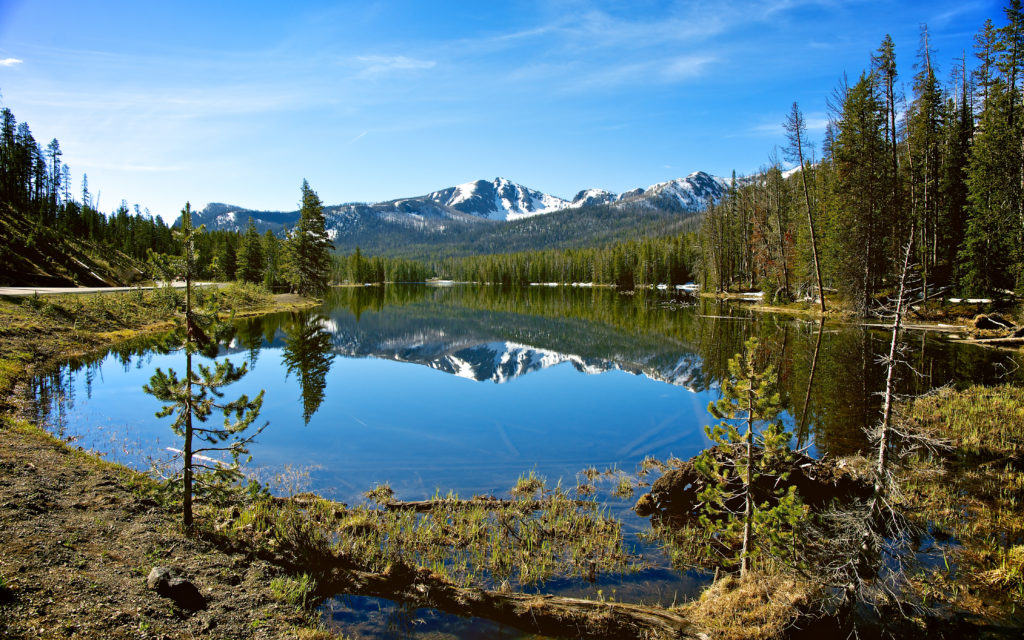
Yellowstone Lake, United States
Yellowstone Lake, the largest single body of water in the famous Yellowstone National Park, is located 7,733 feet (2,316 m) above sea level and covers 125 square miles (324 square kilometers). The lake spends much of the winter under ice, but even during the summer the water is cold, between 40 and 60 F (4.4 to 16 C). There are five sites in the lake, and one in the Firehole River. The main draw here are the same thermal features that are so famous on land, creating steady streams of bubbles venting all around you. You can get near the vents in some cases; in some you should maintain your distance.
Lake Huron, Canada
The Great Lakes offer some stellar wreck diving. One of the best spots is Tobermory, on Lake Huron. The self-proclaimed “freshwater scuba capital of the world” is situated on a peninsula and, in the 1800s and early 1900s, was a busy port surrounded by treacherous waters, which means today’s scuba divers are spoiled with over 20 wrecks. Many of the ships are still well preserved due to the cold water, the most famous perhaps being the Caroline Rose schooner, seen in many photos lying in crystal-clear water just offshore.
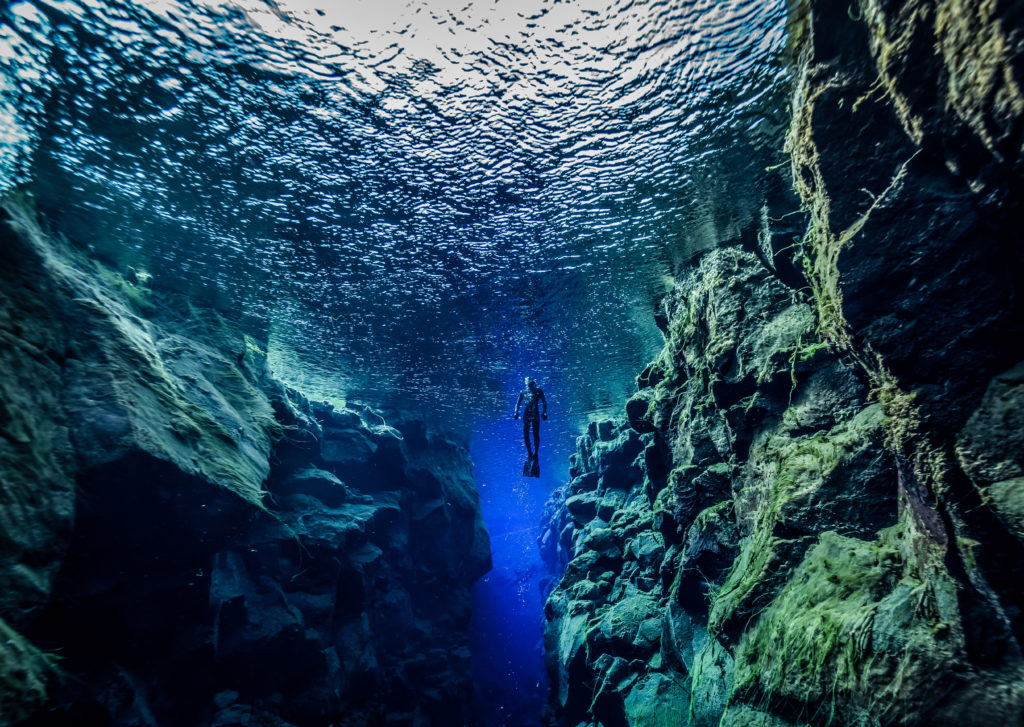
Þingvallavatn Lake, Iceland
Bucket-list alert! You’ve probably heard of this spot because of the stunning dive site that is the Silfra Fissure. Silfra is probably on every cold-water diver’s list — and should be on everyone’s list — with good reason. The fissure’s location means you can dive between the North American and European tectonic plates on the same dive — two continents literally a fin-kick away. There are three main dive sites, know as Silfra Hall, Silfra Cathedral and Silfra Lagoon. The deepest point is 206 feet (63 m) and water temperatures rarely go above 39 F (4 C). The most spectacular of the dives is at the Silfra Cathedral, a 328-foot-long (100 m) fissure, with sparkling visibility from end-to-end in the glass-clear water. You will need a permit.
Pet Cemetery Cenote, Mexico
This is definitely not your normal lake dive. When limestone bedrock collapses, it can form cenotes, or underground lakes, which draw from divers around the world. There are many intriguing cenotes out there, but for this list we’ve chosen Pet Cemetery south of Playa Del Carmen, on Mexico’s Riviera Maya. Part of the world’s second-largest underwater cave system, you can dive this cenote without full cave training. This makes it accessible to many more divers. It’s not very deep, only 10 feet (3 m) on average, but it’s stunning, featuring stalactites, stalagmites and the bones of long-gone animals (from whence it got its name). Buoyancy is key here, as the formations are delicate and you will ruin the vis by kicking up the sediment. So best practice your trim before you go.
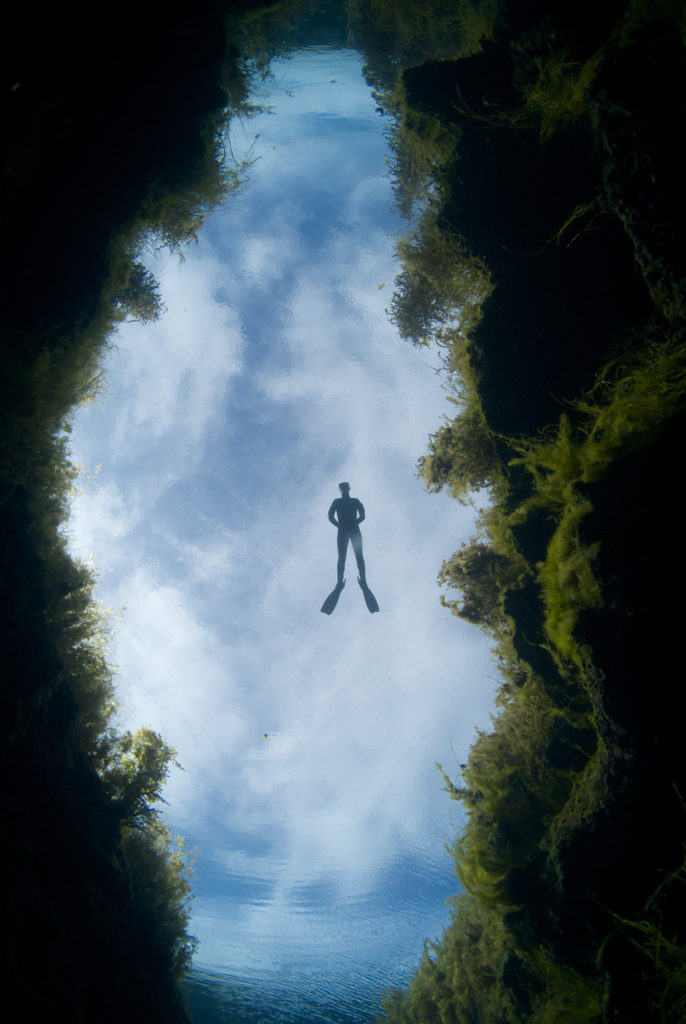
Piccaninnie Ponds, Australia
Located near Mt. Gambier, South Australia, this site is a coastal spring that filters through limestone, making for crystal-clear waters. It’s said to be one of the most beautiful freshwater locations in Australia. There are two main features to draw divers — the Chasm, which has a depth of 328 feet (100 m), and a chamber know as the Cathedral. Properly qualified cave divers can check out the caves, though you can also snorkel here. Both divers and snorkelers need a permit and a time-slot allocation; check here for more information.
Capo D’Acqua, Italy
To the east of Rome, in Central Italy, lies a manmade lake. Created in the 1950s to act as irrigation reservoir for the surrounding land, Capo D’Acqua contains the ruins of two old mills and a partially submerged factory that date back to the Middle Ages. The waters are very clear and temps vary between 59 F and 79 F (15 to 26 C) over the year. Note that before you head to this site you’ll need a permit, which you can get from the local dive center, as the lake is on private land.
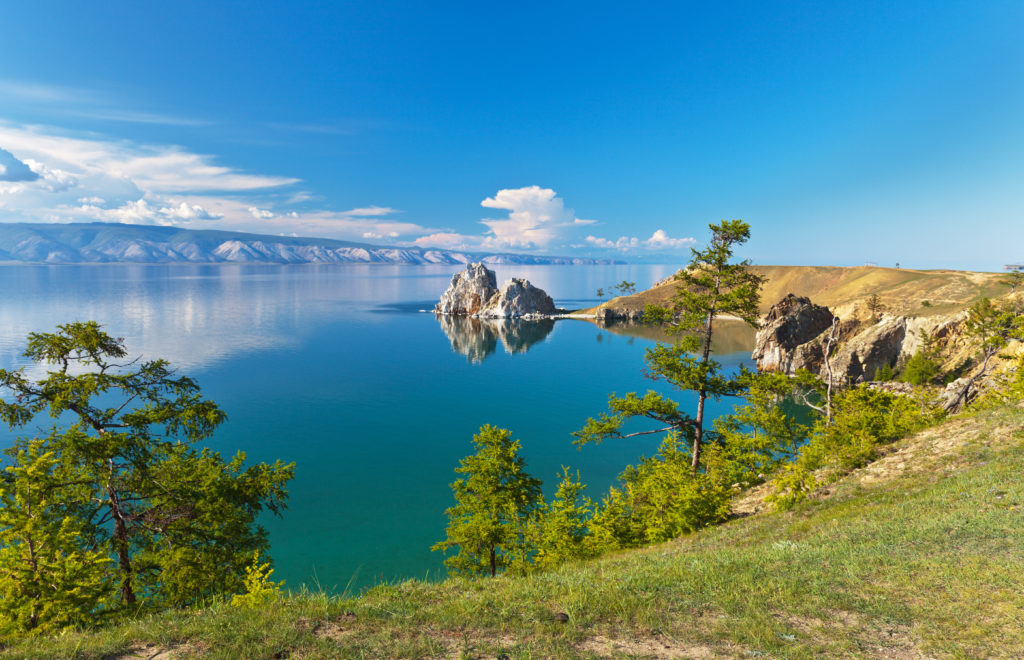
Lake Baikal, Russia
Earlier we highlighted an “easy” entry into Russian dive sites — now we’ll get a bit more adventurous and head to Lake Baikal in southeastern Siberia. The massive lake, about the size of Belgium, is the oldest, deepest and largest lake in the world by volume, containing around 20 percent of all the fresh water on the planet. At its deepest, the lake is 5,387 feet (1,642 m), and is home to more than 2,000 species of plants and animals, many of them endemic, including the nerpa, one of the world’s only freshwater seals.
There are diving possibilities year-round, but Baikal is perhaps most spectacular in the winter, when the lake freezes over and creates amazing vis on ice dives due to the purity of the water. Note that topside temps in winter are between -13 and 41 F (-25 to 5 C) and under the ice, the water is just above the freezing point. Summer water temps vary from 39 to 64 F (4 to 18 C).
Vättern, Sweden
Vättern is one of the deepest and largest lakes in Europe, with a maximum depth of 420 feet (128 m), but with an average depth of 135 feet (41 m). South of Stockholm roughly three hours by car, Vättern is famous for the excellent quality of its water, with many local communities using it for drinking water. The lake holds plenty of life, with over 30 species of fish, including a supposed “lake monster.” There are also a number of wrecks in the lake, at varying depths from recreational to tec-diving only.

